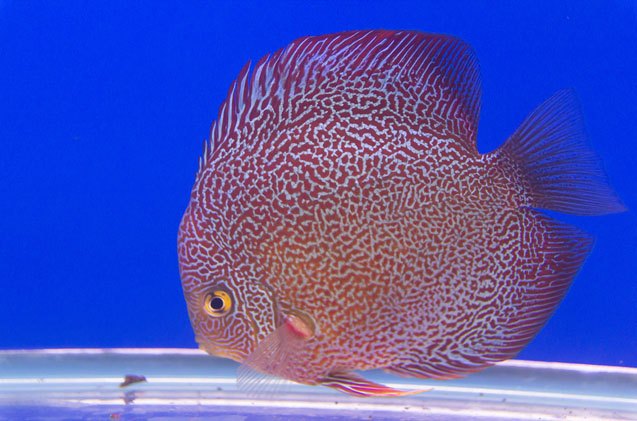Aquarium Biology 101: Anatomy of a Fish

How familiar are you with your fish? Sure, you know that they have the basics: gills, scales, fins. But there’s more to your fish than that. Here are some parts of a fish you may not have known existed, and what they do.
Fins
Of course fish have fins everywhere. The tail is called the caudal fin, used to propel the fish through the water. Most fish have strong caudal fins. The fin at the top of the fish’s spine is the dorsal fin. Think of a shark, often portrayed with their dorsal poking just far enough out of the water that you know they are lurking. The two fins on either side of the fish’s gills are called the pectoral fins, protruding from the breast area – or pectoral muscles. Just below that is the pelvic fin and further back on the belly of the fish is the anal fin. Each of these fins provides the fish with the ability to move and navigate in their natural habitats. Aquarium fish are often bred to emphasize longer, fuller fins for sake of beauty and not for survival.
Related: The 5 Stimulating Spawning Methods of Fish
Lateral Line
Going down the side of a fish is an intricate system that most people are unaware of. It’s called the lateral line system, and simply put, it’s a group of nerves that are hyper sensitive to movements, pressure, and changes within the fish’s environment. Several diseases exist in fish that affect this system. Often referred to as lateral line disease, or “hole in the head,” this is often times fatal for fish. It will appear as an open pit in the fish’s head or along the lateral line. The concern is often that it leaves the fish susceptible to other infections. There is one known cause of these diseases, though many aquarists speculate about what might be. Treatment is often symptomatic, along with providing a quality diet and fresh, clean water.
Labyrinth Organ
Most people are aware that fish breathe using organs called gills, but this doesn’t apply to all fish. Fish such as bettas and gourami have a specialized organ called a labyrinth organ that allows them to breathe air from the surface of the water. This is an evolutionary adaptation because their natural habitats are located in low oxygen shallow waters.
Related: 10 Essentials You Always Need in Your Fish Room
Swim Bladder
The swim bladder is a part of the fish that is hollow and air filled; it helps the fish maintain buoyancy in the water. In aquariums, some fish will get swim bladder disease, most noticeable by a fish swimming in a chaotic or unnatural fashion. Some fish don’t have this organ, and these fish must always swim or they will sink to the bottom. Fish that do have a swim bladder are able to stop swimming for periods of time without issue.
There are some fish anatomy parts that aren’t as commonly known by the average person. This information is useful when owning and keeping aquarium fish, so that you are more aware of what they should look like, and how they should act, and if a problem arises, a keeper who is knowledgeable about their animal’s body will be able to treat issues more effectively.
Summer Davis is the mom of three kids, four dogs, and several tanks of fish. She boasts a passion for all animals, whether they are in the water or on land. This fish aficionado has kept many different species in her time, but holds a special place in her heart for wild and domestic bettas. When she’s not talking about fish, Summer “spins” her extra time as the director of a baton twirling organization.

Summer Davis is the mom of three kids, four dogs, and several tanks of fish. She boasts a passion for all animals, whether they are in the water or on land. This fish aficionado has kept many different species in her time, but holds a special place in her heart for wild and domestic bettas. When she's not talking about fish, Summer "spins" her extra time as the director of a baton twirling organization."
More by Summer Davis
























